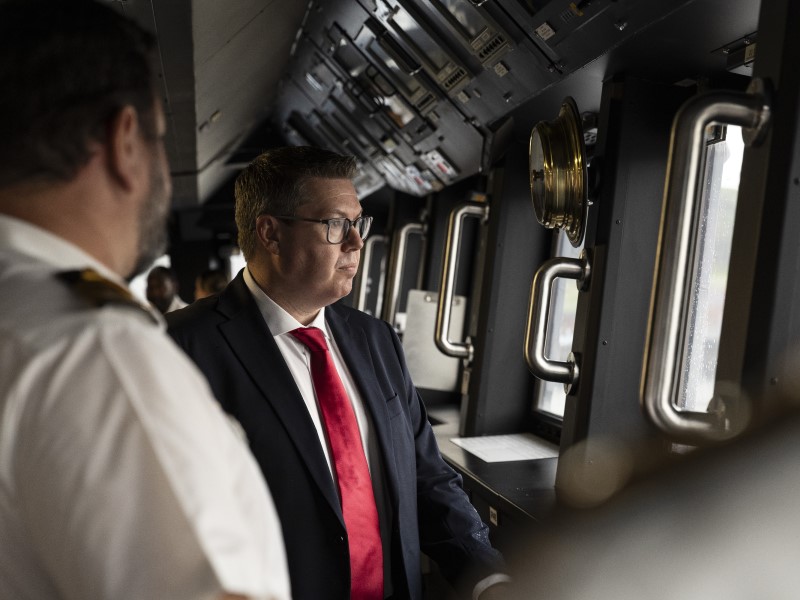A new Defence Industry Development Strategy has halved the number of sovereign capability priorities to seven and simplified grants in a bid to create a more streamlined approach to uplifting the local industrial base.
Launched on Thursday by Defence Industry minister Pat Conroy, the new strategy says Australia’s defence industrial base must be strengthened to deliver more “major equipment, systems, assemblies, and services realising specific functions” and identifies seven specific priorities.
Among the Albanese government’s seven Sovereign Defence Industrial Priorities is a focus on development and integration of autonomous systems, the integration and enhancement of battlespace awareness and management systems, and the domestic manufacture of guided weapons, explosive ordnance and munitions.
Grant support for industry priorities will no longer be delivered through the Sovereign Industrial Capability Priority grants program. It is being replaced by the new $183.8 million Defence Industry Development fund, which includes new and subsumed funding from four existing grants programs.

The full list of the seven Sovereign Defence Industrial Priorities are:
- Maintenance, repair, overhaul and upgrade of Australian Defence Force aircraft
- Continuous naval shipbuilding and sustainment
- Sustainment and enhancement of the combined arms land system
- Domestic manufacture of guided weapons, explosive ordnance and munitions
- Development and integration of autonomous systems
- Integration and enhancement of battlespace awareness and management systems
- Test and evaluation, certification and systems assurance.
While ‘sovereign capability’ refers to capabilities based in Australia, Mr Conroy said some of the capabilities it will also require Australian ownership.
This will be determined on a case-by-case basis, such as the radar technology developed by CEA Technologies, a manufacturer the government took a stake in last year to preserve Australian control.
“… not only is that a company that is essential to our sovereignty, it’s so essential that the Australian Government is acquiring it,” Mr Conroy said.
The priorities outlined in the Defence Industry Development Strategy (DIDS) replace the 14 former Sovereign Industrial Capability Priorities that were named under the former Coalition government.
Mr Conroy told reporters the priorities are “defined and detailed, and they are designed to signal in advance industrial capabilities needed by Defence to give the industry both the time to prepare and the confidence to invest”.
“One of the things we’re critical of the last government is they had 14 Industrial priorities, but they didn’t even define six of them,” Mr Conroy said.
He later flagged that “one of the messages I’ve heard from Defence industry is, if everything’s a priority, nothing’s a priority. People want clear guidance on where we will intervene”.
The DIDS also outlines the timeline that Defence needs Sovereign Defence Industrial Priority outcomes to be delivered by. The first ‘epoch’ outlines capability needs for 2023-25, whereas the second period includes 2026-2030.
To support defence industry companies developing capabilities in line with the Sovereign Defence Industrial Priorities, the government is launching a new Defence Industry Development fund.
While it replaces four existing grants programs, the new program will include four streams targeting similar objectives. The programs being replaced are the Sovereign Industrial Capability Priority program, the Skilling Australia’s Defence Industry program, the Defence Global Competitiveness program, and the Capability Improvement Grants.
The program will open for applications in the first half of 2024, with four support for streams:
- Growth of industry capability and capacity in Sovereign Defence Industrial Priorities
- Export Opportunities for Australian defence industry
- Upskilling and training of defence industry in priority trade, technical and professional skill sets
- Establishing and maintaining security accreditation, in line with the Defence Industry Security Program
Mr Conroy told reporters that since he was appointed minister industry, the defence industry has persistently flagged that the current grants regime is too difficult to navigate.
“One of the [pieces of feedback] we’ve had from our consultation with industry, and there was well over 100 organisations consulted on this, was that there’s too many grants that are too confusing and they duplicated themselves,” Mr Conroy said.
“To give you an example of why we want to simplify it, instead of a company having to make multiple grant applications for different parts of it they can make one grant application that goes to supporting an industrial priority that goes to upskilling their workforce that goes to helping uplift their security. It’s about simplifying it and making it more accessible for the defence industry.”
He also said the government will “intervene and shape the integrated investment program to sustain the seven industrial priorities”.
This will include the development of ‘Detailed Sovereign Defence Industrial Priorities’, in line with the seven priorities outlined in the industry strategy and the upcoming National Defence Strategy.
Do you know more? Contact James Riley via Email.

